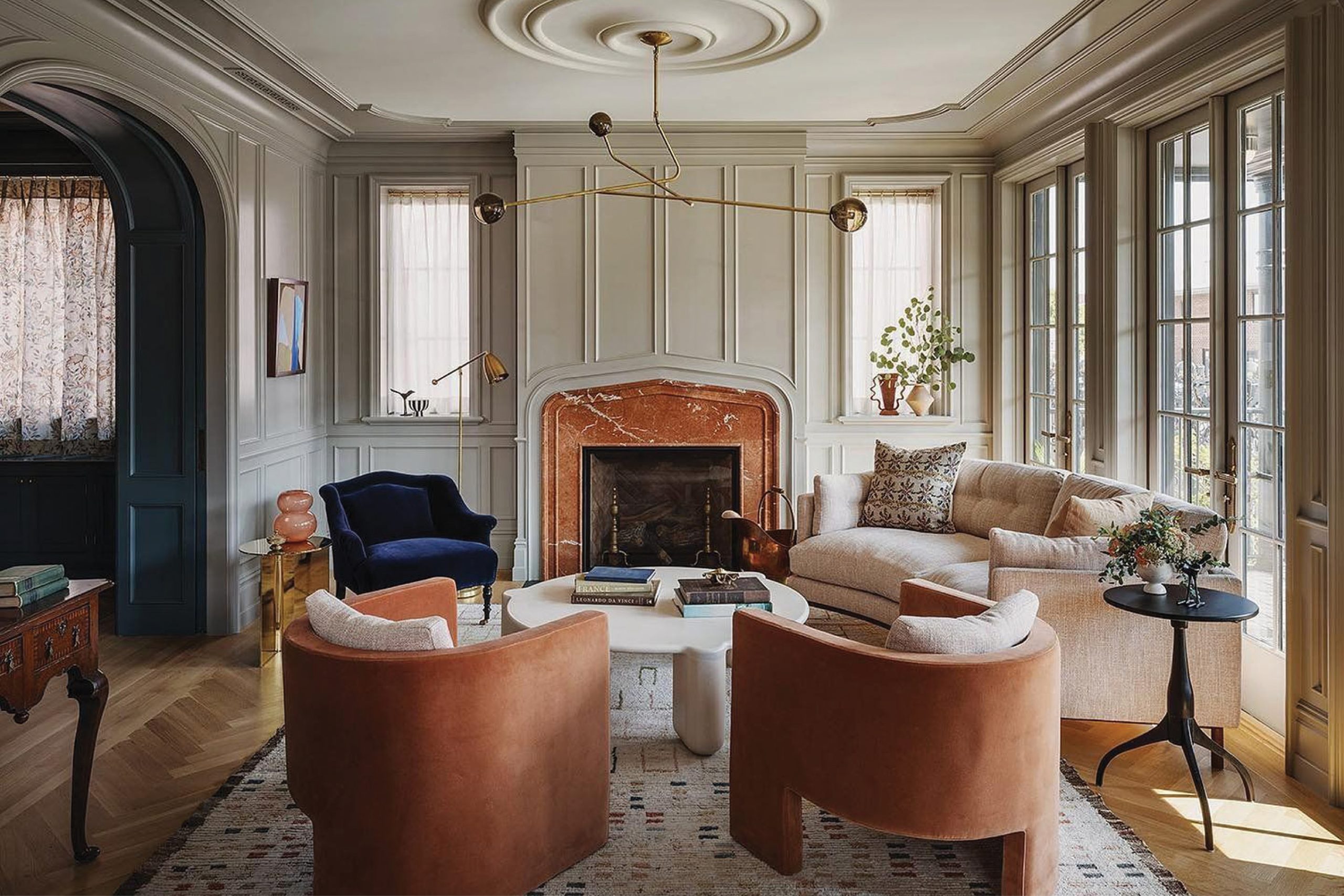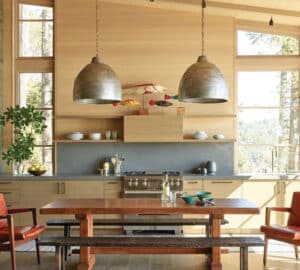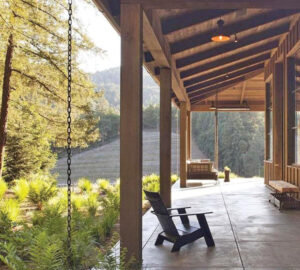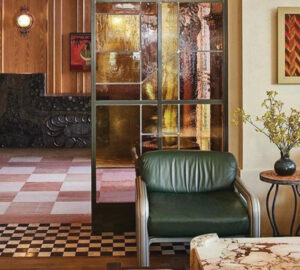Modern traditional interior design combines the clean lines and simplicity of modern design with the warmth and elegance of traditional elements. When it comes to interior design, the style is a popular choice for those who want to blend the best of both worlds. Here are the key features to help you add a unique and personal touch to your home by creating a look that is both timeless and current.
What is modern traditional interior design?
Modern vs. Traditional: Modern design is an interior design style characterized by a monochromatic color palette, clean lines, minimalism, natural materials and natural light. Modernism reflects a stress-free approach to life with minimal decor and an emphasis on industrial materials. Traditional design is often inspired by 18th- and 19th-century decor in a way that celebrates the classic and comforting elements while embracing timeless but not overly fancy styles rather than what’s trending.
Modern Traditional Style: The modern traditional style is essentially a mix of modern and traditional styles and elements that gives a modernized traditional feel.
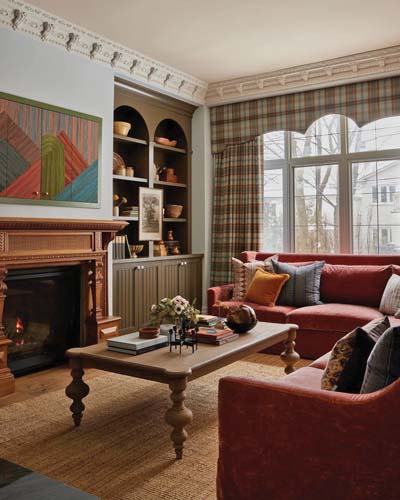
1. Traditional Woodwork
Traditional wood details in furniture pieces and casework such as cabinets and millwork can add a touch of historical elegance to your home. Featuring modern silhouettes and clean lines in spaces with traditional details is a perfect technique for adding warmth and comfort while still keeping the design modern and sophisticated.
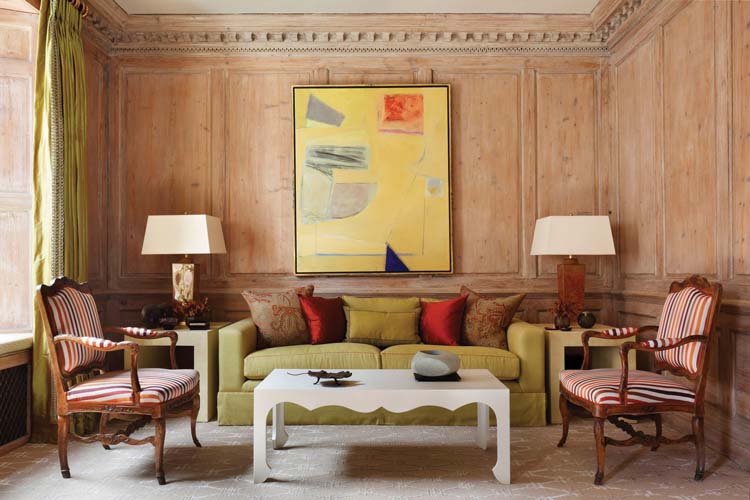
2. Clean Lines
Clean lines are an important element of modern traditional style. Featuring furniture styles with clean lines or architectural features that have a simple and uncluttered look helps to create a sense of balance and harmony in your home.
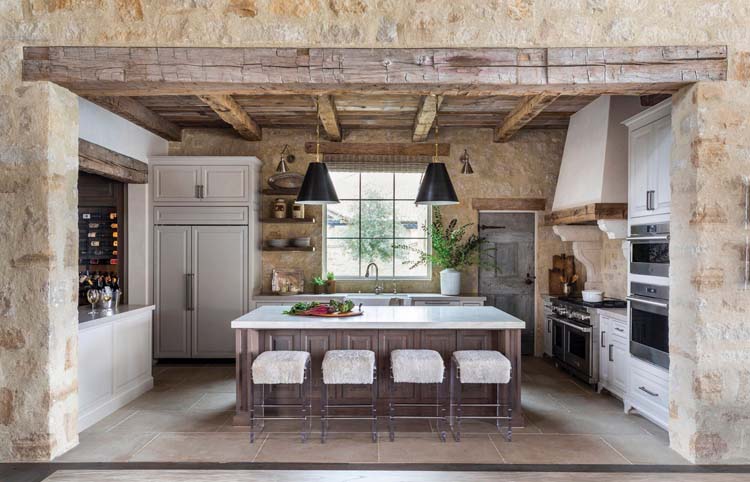
3. Natural Materials
Using natural wood, stone and textiles in your design infuses a space with a sense of authenticity and organic beauty. Whether leaning traditional with wooden beams or furniture or going big and bold with modern marble slabs, these materials are not only visually appealing but also add texture to a space, creating a sense of comfort and coziness that speaks beautifully to traditional design. No renovation is necessary to take advantage of this timeless trend. You can incorporate furniture and decor crafted from natural materials to achieve this look for your space.
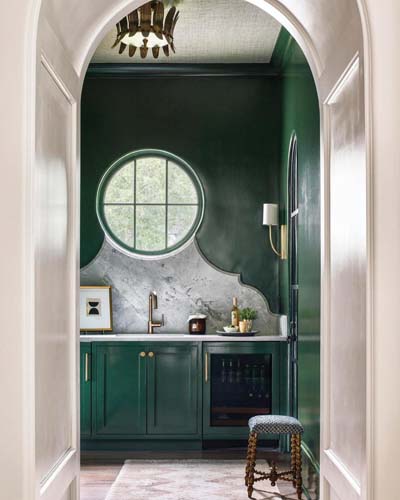
4. Layered Textures, Patterns, and Materials
Layering a variety of textures, patterns and materials is a crucial piece of achieving the modern traditional look. An intentional blend of modern and traditional patterns, finishes, accessories, lighting and artwork lends depth and interest while adding a sense of warmth and comfort to any space.
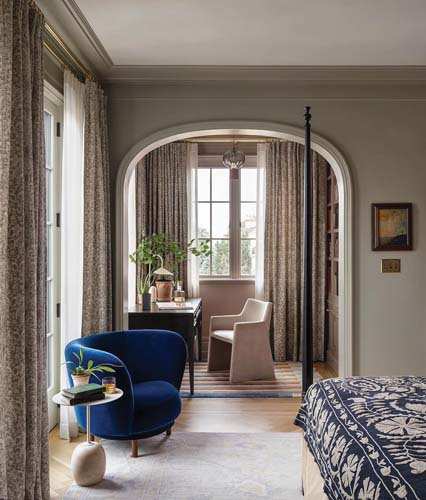
5. Neutral Palette with Pops of Color
How color is used plays a large part in achieving a modern traditional design. Neutral and muted tones such as beige, gray and white are often used as a base color palette, while pops of color are added in the form of accent pieces, furniture or artwork.
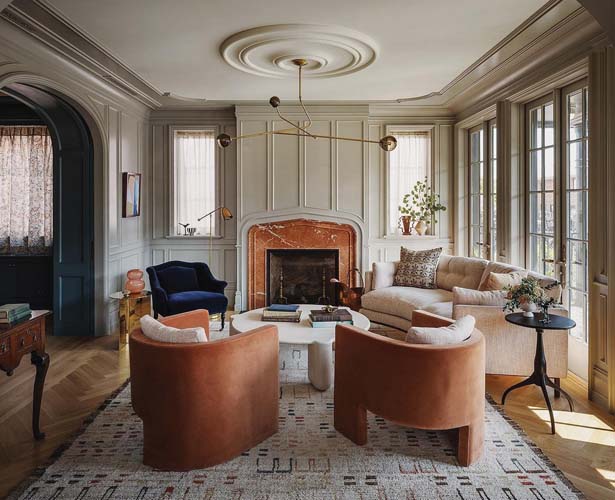
6. Harmonious Fusion of Old and New
Incorporating vintage or antique pieces into a modern setting or by adding modern elements to a traditional space is one way to achieve this harmonious blending of old and new. This creates a sense of history and character in the space while still keeping it fresh and modern. For instance, a vintage chandelier can be hung in a modern living room to add a touch of elegance and history, while a sleek and contemporary sofa can be paired with an antique coffee table to create a stylish and inviting space.
Modern Traditional Design: A Versatile and Evergreen Style
Modern traditional interior design is a versatile approach to creating a modern yet familiar and comfortable space that exudes your individuality and suits your lifestyle. By mindfully blending old with new through layered textures, patterns, and materials, use of natural materials and inclusion of vintage-inspired accessories, you can achieve a unique and personality-filled space that is both timeless and contemporary.
Scout & Nimble is a retail site and blog that aims to make expert design accessible to all. Follow at blog.scoutandnimble.com.





